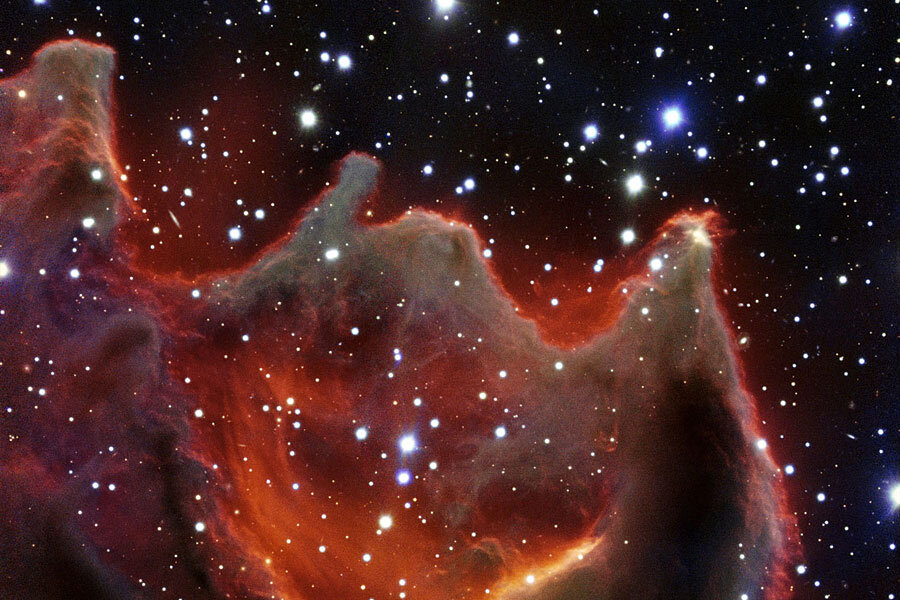Mysterious 'God's hand' space globule imaged by Very Large Telescope
Loading...
Sen—A so-called cometary globule known as God's Hand because of its claw-like appearance, appears to reach out into space. In a new image from ESO's Very Large Telescope (VLT), dappled with stars, striking detail within the gas, also labelled CG4, can be seen.
How such objects form is now quite well understood, but how they go about giving birth to the new stars within them is still to be fully determined. CG4 lies around 1,300 light years away from Earth, in the constellation of Puppis.
"Such globules are 'cocoons' that appear completely dark in the visible, as they are made of very cold gas and dust that block the light of stars," Dr Henri Boffin, an astronomer at the Paranal Observatory in Chile, told Sen.
"This is where we think that Sun-like stars form, as the cloud will contract under its own gravity and heat up, forming one or several stars."
A dense build-up of this material forms a "head", which is what is visible in the VLT image spanning approximately 1.5 light years in diameter, but intense radiation from starlight is slowly eroding it away.
This head provides umbrella-like protection for the material underneath, preventing it from being as affected by the nearby stars to give the impression of a "tail" fanning downwards in a comet-like fashion—hence the name of cometary globule. The tail of CG4, seen in the image below, is around eight light-years long.
It is understood that cometary globules are the result of an interaction with the hot stellar winds and violent ultraviolet radiation that emanate from massive OB stars (referring to their spectral type), that has shaped and moulded the material to change their form from an "elephant trunk" (similar to the Hubble Space Telescope's famous "Pillars of Creation") to the comet-like shape we see today.
The red colour is due to atoms of hydrogen gas undergoing energetic interactions with the same stellar photons that are causing the erosion. The shape of cometary globules can also be due to the effects of a nearby supernova explosion.
By observing CG4 and looking at various properties such as the temperature, density and velocity of the material, astronomers hope to learn more about the processes that occur within these nebulous, comet-resembling objects. (They have nothing to do with comets really).
"How and why they are this shape is relatively well known," Dr Boffin told Sen. "However, what it is crucial is to understand how such clouds give rise to baby stars—this is still a mystery of Nature.
"And in order to study such dark clouds, opaque to visible light, one needs to go to greater wavelengths. In particular, with ALMA, it is possible to probe the inside of the cloud, in effect doing a sonogram, as we do to see babies in their womb."
The image of CG4 was taken as part of ESO's "Cosmic Gems" programme, aimed at obtaining images with ESO telescopes for the purposes of education and public outreach. The instruments and telescopes used as part of this initiative include the VIMOS and FORS2 spectrographs on the Very Large Telescope at the Paranal Observatory, and the Wide Field Imager on the 2.2-metre MPG/ESO telescope at La Silla, both situated in Chile.
Related Links:
VLT instrument will look back to Big Bang
Europe's ESO celebrates 50 years of a major observatory
Hubble shows turbulent star-making region
Original story from Sen. © 2015 Sen TV Limited. All rights reserved. This material may not be published, broadcast, rewritten or redistributed. For more space news visit Sen.com and follow @sen on Twitter.







